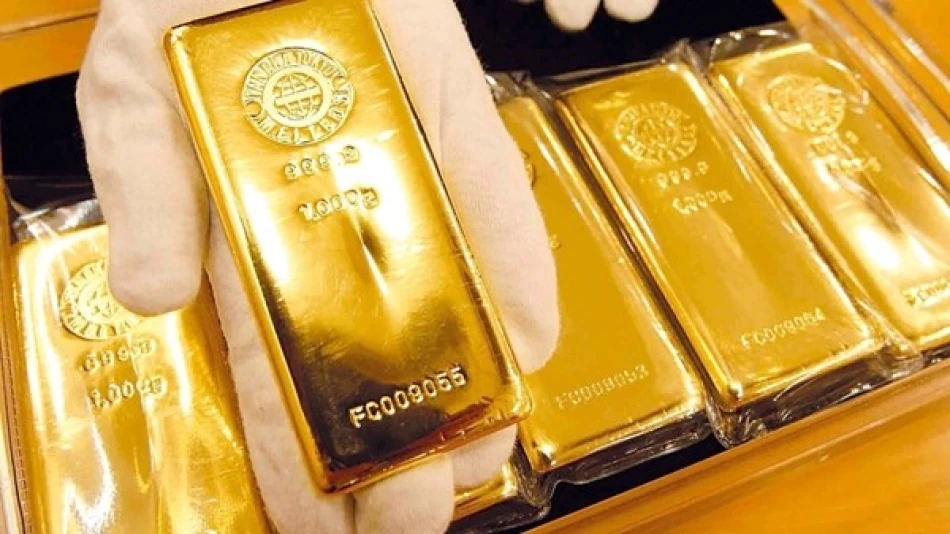
Gold Prices Slide as Dollar Surges after US Interest Rate Cut
Gold Retreats from Record Highs as Fed Rate Cut Strengthens Dollar Despite Easing Signals
Gold prices pulled back from historic peaks on Thursday, falling victim to a strengthening dollar following the Federal Reserve's quarter-point interest rate cut. Despite the central bank's dovish signals for continued monetary easing, the immediate market reaction favored the greenback over safe-haven assets, creating a paradoxical scenario where gold retreated even as conditions appeared favorable for the precious metal.
Market Movement Details
Spot gold declined 0.2% to $3,653.54 per ounce by 01:19 GMT, retreating from Wednesday's record high of $3,707.40. The pullback was more pronounced in futures markets, with December gold contracts falling 0.8% to $3,688.10.
The dollar index gained 0.2%, continuing its upward momentum against competing currencies. This strength made gold more expensive for holders of other currencies, dampening international demand for the precious metal despite the Fed's accommodative monetary stance.
Fed Policy Creates Cross-Currents
The Rate Cut Paradox
Wednesday's 25 basis point rate reduction, while widely anticipated, created conflicting market dynamics. Typically, lower interest rates benefit gold by reducing the opportunity cost of holding non-yielding assets. However, the Fed's measured approach and emphasis on gradual easing appeared to reassure markets about economic stability, strengthening the dollar in the process.
Forward Guidance Impact
The central bank's indication of steady rate cuts through year-end suggests a prolonged period of monetary accommodation. This dovish trajectory historically supports gold prices, as lower real yields make the metal more attractive relative to interest-bearing assets. The current pullback may represent a temporary technical correction rather than a fundamental shift in gold's appeal.
Broader Precious Metals Performance
The precious metals complex showed mixed signals, reflecting varied investor sentiment across the sector. Silver spot prices fell 0.3% to $41.55 per ounce, mirroring gold's weakness and suggesting broader dollar strength was the dominant factor.
Platinum bucked the trend with a 0.3% gain to $1,367.60, while palladium rose 0.4% to $1,158.94. These industrial metals' resilience indicates that supply-demand fundamentals in automotive and manufacturing sectors may be providing support independent of monetary policy considerations.
Market Implications and Outlook
Dollar Dynamics
The dollar's strength following a rate cut reflects market confidence in the Fed's ability to engineer a "soft landing" for the U.S. economy. This scenario, where inflation moderates without triggering recession, can paradoxically strengthen the currency even as rates decline, creating headwinds for dollar-denominated commodities like gold.
Investment Strategy Considerations
For precious metals investors, the current environment presents a complex landscape. While lower rates and continued monetary easing provide fundamental support for gold, short-term dollar strength may limit upside momentum. The record highs achieved this week demonstrate gold's underlying appeal, but consolidation around current levels appears likely as markets digest the Fed's measured approach to policy normalization.
The divergence between spot and futures prices, with futures showing greater weakness, suggests some near-term caution among traders while longer-term sentiment remains constructive for precious metals as portfolio diversifiers in an era of continued monetary accommodation.
 Layla Al Mansoori
Layla Al Mansoori







